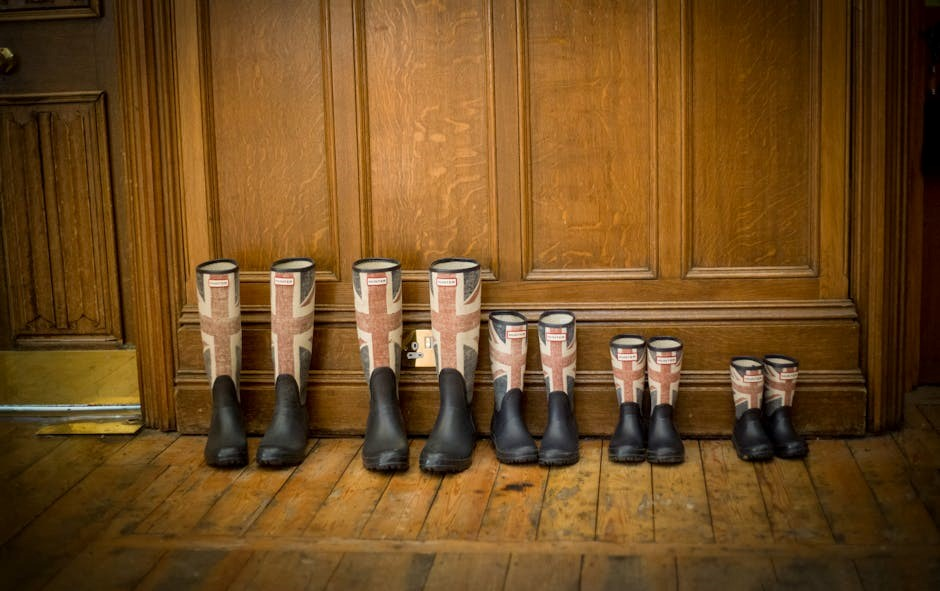The UK Shoe Size Guide is a comprehensive resource to help find the perfect fit, covering UK, US, and EU sizes for men, women, and children, ensuring comfort and style while addressing common sizing challenges across brands.
Understanding the Importance of Proper Shoe Sizing
Proper shoe sizing is crucial for comfort, health, and performance. Incorrect sizes can lead to discomfort, blisters, and long-term foot issues. Many people, especially women, wear the wrong size due to improper measuring or brand variations. A well-fitting shoe supports foot health, enhances mobility, and improves overall satisfaction. This guide helps ensure accurate sizing, addressing common challenges like brand-specific differences and foot shape variations. By understanding proper sizing, you can make informed choices for better footwear experiences.

The UK Shoe Size System
The UK shoe size system uses a scale where sizes increase by 1/3 of an inch per size. It includes half sizes and applies to men, women, and children.
Men’s Shoe Sizes in the UK
Men’s UK shoe sizes range from 6 to 16, increasing by 1/3 of an inch per size. Common sizes like 8, 9, and 10 are popular, while 6.5 is a half size. The system accommodates varying foot lengths, with larger sizes better for wider feet. Brands like Clarks and ASOS offer detailed charts, ensuring accuracy. Proper fit is crucial for comfort and support, especially in styles like trainers or boots.
Women’s Shoe Sizes in the UK
UK women’s shoe sizes start at 2 and go up to 9, with half sizes available. Popular sizes include 5, 6, and 7, offering a comfortable fit for various foot shapes. Many brands provide conversion charts to US and EU sizes, ensuring ease of shopping. Proper sizing is essential for style and comfort, especially in heels or flats. Measuring foot length accurately helps avoid common fit issues, as nearly half of women wear incorrect sizes, according to recent studies.
Children’s Shoe Sizes in the UK
Children’s shoe sizes in the UK range from infant sizes (starting at 9.5) to youth sizes (up to 6). Sizes are based on foot length in centimeters, with half sizes available to accommodate growth spurts. Parents are advised to measure their child’s feet regularly, as proper sizing is crucial for comfort and healthy foot development. Many retailers, like Clarks, offer detailed guides to help determine the perfect fit. Always check size charts before purchasing, as sizes can vary slightly between brands and styles.

How to Measure Your Foot Length Accurately
To measure your foot length accurately, stand with your heel against a wall, place a ruler beside your foot, and measure from the heel to your longest toe in millimeters for an accurate UK shoe size.
Step-by-Step Guide to Measuring Foot Length
Place your foot on a flat surface with your heel against a straight edge. Use a ruler to measure from the back of the heel to the tip of your longest toe. Ensure the foot is at its longest point, typically when standing. Record the measurement in centimeters or inches. Compare this length to the UK shoe size chart to determine your ideal fit. For accuracy, measure both feet and use the larger measurement.
How Foot Shape Affects Shoe Sizing
Foot shape significantly impacts shoe fit. Narrow or wide feet can affect sizing accuracy, as standard charts assume an average width. High arches may require more supportive shoes, while flat feet might need different cushioning. Toe length and heel shape also influence fit, as some shoes accommodate longer toes or narrower heels better. Measuring both length and width ensures a more accurate fit, especially for unique foot shapes. Brands often cater to specific foot types, making it important to consider shape when choosing styles.

UK to International Shoe Size Conversion Chart
This chart provides a detailed comparison of UK shoe sizes with their US and EU equivalents, offering a practical guide for shoppers to find their perfect fit globally.
Converting UK Sizes to US and EU Sizes
Converting UK shoe sizes to US and EU sizes is straightforward with a detailed chart. UK size 3 corresponds to US Men’s 3.5 and EU 35, while UK size 6 equals US Men’s 6.5 and EU 39. For women, UK size 4 matches US Women’s 5 and EU 35. These conversions are based on standard foot length measurements in centimeters. Always refer to the specific brand’s size chart, as slight variations may occur. Using a size conversion guide ensures the best fit when shopping internationally.
- UK Men’s 3 = US Men’s 3.5 = EU 35
- UK Women’s 4 = US Women’s 5 = EU 35
- Measurements are in centimeters (e.g., UK 3 = 22.8 cm)
Use these charts as a guide for accurate conversions and optimal comfort.
Conversion Tables for Men, Women, and Children
Conversion tables provide a clear comparison of UK, US, and EU shoe sizes. Men’s UK size 7 corresponds to US 8 and EU 41, while Women’s UK size 5 aligns with US 7 and EU 38. Children’s sizes follow a similar pattern, with UK Junior 1 equivalent to US 1 and EU 33. These tables are essential for ensuring accurate fit, especially when shopping across international brands. Always refer to the charts to avoid sizing discrepancies and find the perfect pair for any occasion.
- Men: UK 7 = US 8 = EU 41
- Women: UK 5 = US 7 = EU 38
- Children: UK Junior 1 = US 1 = EU 33

Common Sizing Issues and Solutions
Common sizing issues include inconsistent fits across brands and incorrect measurements. Solutions involve using conversion charts, measuring feet accurately, and considering foot shape for optimal comfort and fit.
- Inconsistent sizing across brands can lead to poor fit.
- Measure feet regularly to avoid size mismatches.
- Consider foot shape when selecting shoes.
Differences Between Brand-Specific Sizing
Different brands often have varying sizing standards, leading to inconsistent fits. Some brands run larger or smaller than others, while others may cater to specific foot shapes. For example, Nike shoes may fit differently compared to Gucci or Clarks. This discrepancy can make finding the right size challenging. To address this, it’s essential to refer to brand-specific size charts and customer reviews for guidance. Additionally, measuring your foot length and comparing it to the brand’s sizing guidelines can help ensure a better fit. Always check for size consistency across styles within the same brand.
How to Address Common Fit Problems
Common fit issues include shoes being too tight, too loose, or not aligning with foot shape. To resolve this, try different sizes or styles, and consider using insoles for added comfort. Foot shape plays a significant role, so opt for brands catering to your foot type. Always try shoes on if possible, and refer to customer reviews for fit feedback. Ensuring proper fit enhances comfort and prevents discomfort or injury, making it crucial to address these issues proactively for the best shoe-wearing experience.

Factors Influencing Shoe Fit
Foot shape, brand-specific sizing, and activity type significantly impact shoe fit. Proper measurement and understanding personal preferences ensure optimal comfort and functionality for various footwear needs.
Impact of Foot Shape on Shoe Fit
Foot shape significantly influences shoe fit, as variations in width, arch height, and toe length affect comfort and performance. Narrow or wide feet may require specific styles, while flat feet or high arches need proper support. Brands often design shoes catering to common foot shapes, but understanding your own can guide better choices. For instance, people with wider feet may prefer roomier toe boxes, while those with high arches might benefit from additional cushioning. Accurate measurement and trying shoes in person can help address these unique needs effectively.
Differences in Fit Between Shoe Types
Shoe types vary in fit due to design and purpose. Trainers often offer snug support, while boots may have more room. Sandals prioritize breathability, and heels focus on stability. Each style caters to specific needs, so sizing can differ slightly. For example, running shoes might fit tighter for performance, whereas loafers could feel roomier. Understanding these differences helps in selecting the right size for comfort and functionality across various shoe types. Always consider the shoe’s intended use when choosing your size for optimal fit and satisfaction.
Using the UK Shoe Size Guide ensures accurate measurements, helping you find the perfect fit for comfort and style across various shoe types and brands effortlessly.
Final Tips for Finding the Perfect Fit
To ensure the perfect fit, measure your feet regularly as sizes can change over time. Try shoes later in the day, as feet tend to swell. Consider the shape of your foot and opt for styles that accommodate it. Use conversion charts to compare UK sizes with US and EU sizes. Don’t hesitate to consult brand-specific guides, as sizing can vary slightly between brands. Remember, comfort is key, so prioritize how the shoes feel rather than just the size label.
